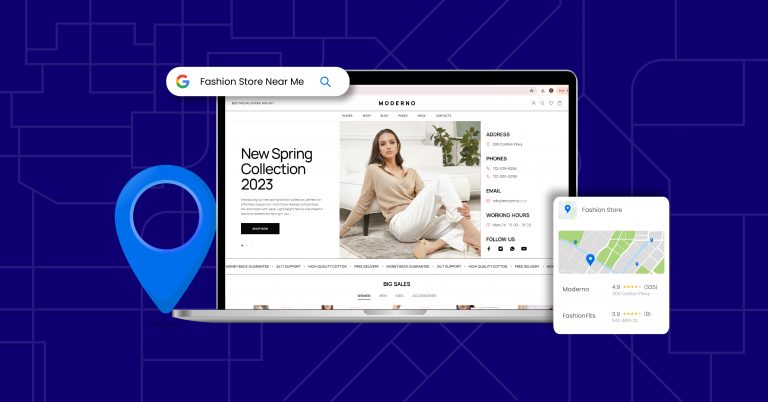In this digital era, investing in your business’s online presence is crucial. Transforming static location pages into dynamic virtual storefronts can significantly enhance customer engagement and drive sales.
By optimizing these pages, you can enhance your online presence, improve local SEO, and drive more traffic to your physical stores. This comprehensive guide will walk you through the process of virtual storefront optimization, ensuring your business stands out in local search results.
A virtual storefront is an online representation of your physical store. It provides customers with essential information, such as location, hours, products, and services, while also engaging them with compelling content and visuals. Optimizing your location pages to serve as virtual storefronts can significantly improve your local SEO, making it easier for customers to find you online and visit your physical store.
Optimizing your location pages into effective virtual storefronts requires a strategic approach. This guide will walk you through the essential steps needed to transform your location pages, enhance your local SEO, and drive more traffic to your physical stores. Let’s delve into the specific actions you can take to achieve successful virtual storefront optimization.

Conduct Location-Based Keyword Research
Effective virtual storefront optimization starts with thorough location-based keyword research. Identify the keywords and phrases that potential customers are using to find businesses like yours in your area. Tools like Google Keyword Planner and Moz’s Keyword Explorer can help you discover relevant keywords.
Focus on Local Keywords:
Optimize Your Content for Local Keywords
Once you have your keywords, incorporate them naturally into your content. This includes your page titles, meta descriptions, headers, and body text. Make sure your content is informative and engaging, providing value to your visitors.
Content Optimization Tips:
Use Geo-Centric SEO Techniques
Geo-centric SEO techniques help search engines understand your location and relevance to local searches. This involves optimizing your website for local search terms and ensuring your business information is consistent across all online platforms.
Geo-Centric Strategies:
Enhance Your Store Locator SEO
If your business has multiple locations, a store locator can be a valuable tool. Optimize your store locator for SEO by ensuring it is easy to use and includes detailed information about each location.
Store Locator Tips:
Create Engaging and Relevant Content
Content is king when it comes to SEO. Create engaging and relevant content that appeals to your local audience. This can include blog posts, videos, and infographics that highlight your products, services, and community involvement.
Content Ideas:
Implement Real-Time Updates and Promotions
Keep your location pages fresh and engaging by regularly updating them with new information, promotions, and events. This not only keeps customers informed but also signals to search engines that your content is current and relevant.
Update Strategies:
Transforming your location pages into virtual storefronts is a powerful way to enhance your local SEO and attract more customers. By following these best practices—conducting location-based keyword research, optimizing content, using geo-centric SEO techniques, enhancing store locator SEO, focusing on ranking factors, creating engaging content, and implementing real-time updates—you can create a compelling online presence that drives traffic to your physical stores.
For businesses looking to maximize their local visibility and customer engagement, implementing these strategies is essential. Start optimizing your virtual storefronts today and watch your local search rankings soar.
Let us help you create an engaging online presence that attracts and retains local customers.